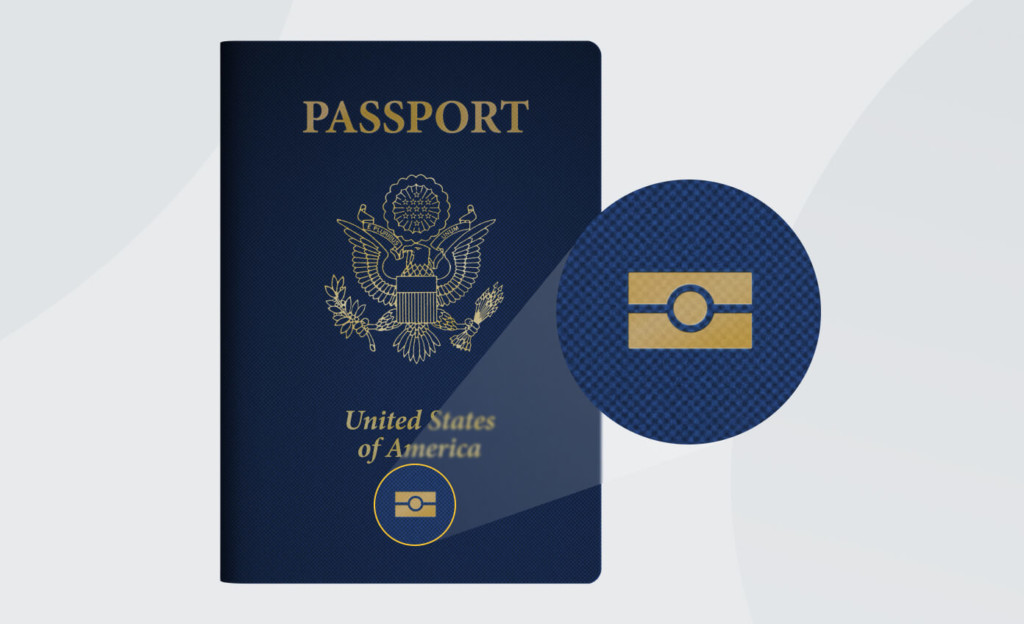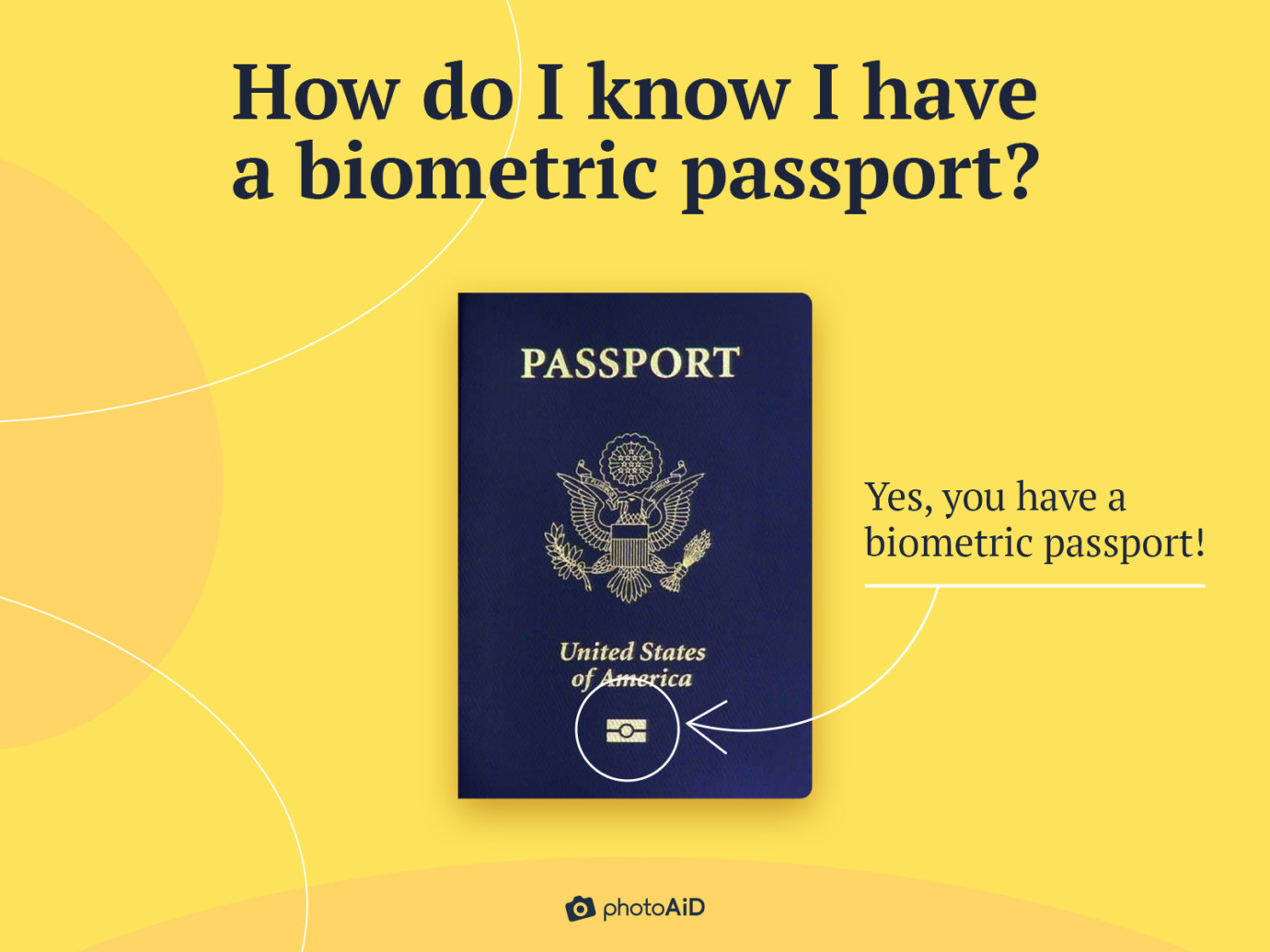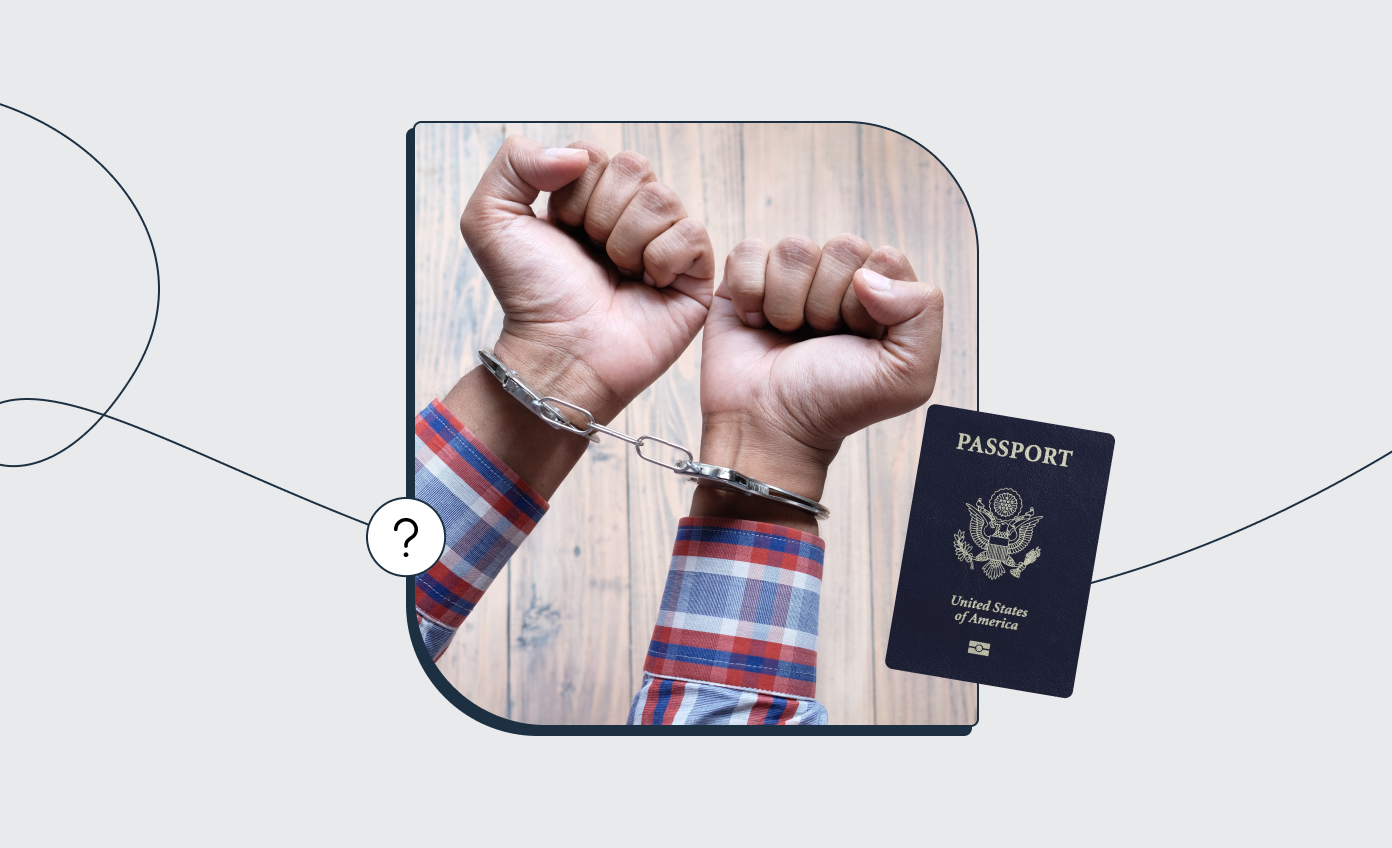According to Reports and Statistics from the US Department of State, close to 22 million biometric passports were issued in the United States only in 2022.
But—
What does a “biometric passport” mean?
A biometric passport (an electronic or e-passport) is a traditional paper document containing an embedded RFID microchip that holds your personal information (name, date of birth, and nationality) but also your photograph, fingerprints, biometric facial data, and iris scans.
Keep reading to learn more about biometric passports, their benefits, and how they work.
Get a compliant passport photo in 3 minutes with PhotoAiD’s passport photo maker.
- Upload or take a photo.
- Let the PhotoAid Al check and fix it.
- A compliance expert will verify the result.
- Download or order a print. Done!


Get a digital passport photo or order prints with help from PhotoAiD®
100% acceptance, expert verified
2x money-back guarantee
3 minutes and done
11,000,000+ happy users
I was pressed for time and couldn’t get hold of a photographer. I found PhotoAiD, took a selfie, uploaded it, and had a compliant passport photo almost instantly. Getting a photo for my baby girl was a breeze, too!
Difference Between a Biometric Passport and a Non-Biometric Passport
A non-biometric passport is the common type of passport issued years ago, where the personal information of its holder was written on the corresponding page, generally called the biometric page of a passport.
This biometric passport page is where holders can find their photograph.
A biometric passport is the new format being issued as of August 2007 in the United States. Its main difference is that it stores all this personal information and many other types of information electronically, instead of in printed format, such as:
- essential personal information (full name, address, etc.)
- fingerprints
- digital signature
- digital passport photo
RECOMMENDED READING:
How to Take Passport Photo at Home
Biometric Passport: What Is It?

Also called an electronic passport (e-Passport) or digital passport, the biometric passport is the type of passport containing biometric personal information, prioritizing security and confidentiality. The most common type of a biometric passport is passport Type “P.”
These are issued by countries that are part of the Visa Waiver Program (VWP) and work under common standards specified in Doc 9303 at ICAO site, that is, the International Civil Aviation Organization.
An electronic passport integrates a microchip that:
- carries a biometric identifier
- combines RFID technology (like that used on credit cards or debit cards) to avoid manipulation of the stored information
- digitally collects personal information and biometrics of its holder (which you can find on the passport biometric page)
These biometric properties are key to performing facial recognition, iris recognition, and finger recognition.
*Learn how to get a US biometric passport at the post office or by mail.
How do biometric passports work?
When carrying a biometric passport during a trip, travelers won’t even need the assistance of officers at the border control, as e-gates will automatically scan the microchip.
If these electronic gates are unavailable in the destination country, the immigration official will scan the microchip in a second. In the case of US passports, this microchip can be found on the back cover of the book.
The information contained in the microchip will be used to verify the traveler’s identity by comparing it with previous database entries. Showing the biometric page of a passport will no longer be necessary.
Do I Have a Biometric Passport? Here’s How to Check
The easiest way to tell if you have a biometric passport is to look at the front cover. Your passport is biometric if there’s a small, gold camera logo at the bottom under the country name.
Moreover, you can look at the date your passport was issued—all US passports issued after 2007 are biometric.
It’s also worth noting that passport cards can’t contain an RFID chip, so they’re never biometric passports.

Related reading:
- I Can’t Find My Passport and My Flight Is Tomorrow!
- Create a MyTravelGov Account to Renew a Passport Online
8 Benefits of a Biometric Passport
A new security system, convenience for travelers… Learn the whole list of advantages of an electronic passport:
- No need to attend the visa application center. Now visas can be digitally attached to the biometric passport, which is especially convenient for the elderly or the disabled.
- Biometric information as well as personal data stored in the microchip can be compared to the document and its holder.
- The microchip features Frequency Identification (RFID), meaning physical contact is not required as information is accessed wirelessly through radio waves.
- Identity confirmation is facilitated to officials by contactless reading, avoiding queues at border control.
- Passenger transit at ports of entry is be even faster if e-gates are available.
- Sensitive personal information is protected thanks to Public Key Infrastructure (PIK) policies regulating the e-Passport system.
- The chances of someone accessing the data stored by the microchip and committing any criminal action are minimal.
- Replicating personal information is more challenging than in the case of the physical pages of its predecessor.
PhotoAiD®: Biometric Passport Photos in 2 Minutes
Over 1 million people have already used PhotoAiD® to get biometric photos and renew their passports. This app is reviewed with 4.7 stars on TrustPilot, and has been featured by National Geographic, Glamour, and Forbes, among many others.
Just take a picture anywhere (take as many tries as you like) and upload it to the app to get fully government-compliant passport images. The AI system will ensure the picture meets the official guidelines and, if needed, correct any errors automatically.

This tool is particularly convenient for seniors, people with disabilities, and babies, as they can choose the preferred time and place!
Applicants can download the digital passport photo immediately, ready to upload to the online passport application or to print on 4×6 paper, or have printed photos sent to the address of their choice.
No need to worry if the generated picture doesn’t meet the official requirements, PhotoAiD® services include a 200% money-back guarantee.

FAQ
In case you need more detailed information, take a look at the most common questions about biometric passports.
What is biometric on a passport?
What is the difference between a biometric and a non-biometric passport?
What is the purpose of a biometric passport?
What is the advantage of a biometric passport?
<a href="https://photoaid.com/blog/biometric-passport/" class="ek-link">Where’s the biometric symbol on the cover of your passport?</a>
Biometric Passport: Closing Thoughts
Ready to be digitally scanned and designed with optimal security measures, the biometric passport is the preferred format to ensure a pleasant traveler experience while safeguarding your identity.
Those applicants who need a photo for the biometric passport can trust PhotoAiD® to get their perfect images within 3 minutes.

Alejandro is a writer with 5+ years of experience. He graduated in English philology and holds an MA in Multilingual and Intercultural Communication. In his spare time, he improves recipes, seeking to delight his tastebuds.
![Biometric Passport—Full Guide [2023]](https://photoaid.com/blog/wp-content/uploads/2023/03/biometric-passport.jpg)












